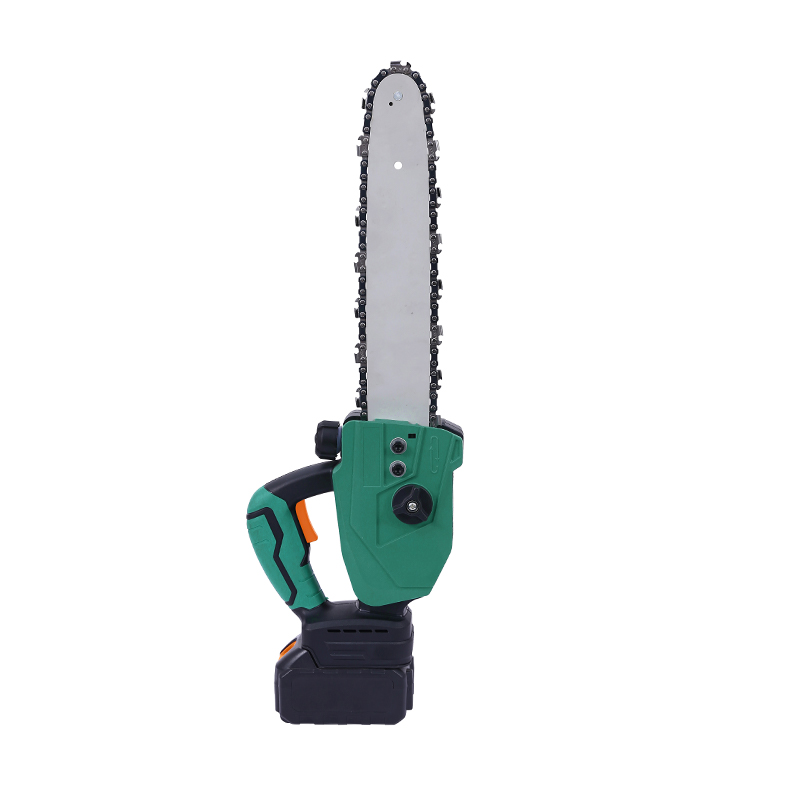In the rapidly evolving power tools market, the Brushless Cordless Chain Saw is emerging as a serious contender to traditional gas-powered models. With improvements in battery capacity, motor technology, and cutting efficiency, many professionals and homeowners are now reconsidering their options. But does the Brushless Cordless Chain Saw truly match—or even surpass—the performance of gas alternatives?
The core innovation behind the Brushless Cordless Chain Saw lies in its motor. Unlike brushed motors, brushless technology offers higher efficiency, reduced heat, and extended tool life. This design results in less maintenance and a more consistent power output, which is critical when cutting thick hardwood or dense brush.
The power source is another defining feature. Most Brushless Cordless Chain Saw models now come equipped with high-voltage lithium-ion batteries (ranging from 40V to 80V, enabling them to deliver torque comparable to many gas-powered saws. Modern battery platforms also allow users to interchange batteries across tools, adding convenience and cost savings.
Field Test: Comparing Performance in Real-World Conditions
To assess real-world performance, Redwood Landscaping Co., a tree service and land-clearing contractor based in Oregon, recently conducted a three-month test comparing a top-tier Brushless Cordless Chain Saw to a 50cc gas-powered chainsaw in daily operations.
The test involved felling and sectioning Douglas fir trees averaging 18 inches in diameter. According to site supervisor Mark Dillon, the Brushless Cordless Chain Saw handled the job with unexpected efficiency. “It cut clean and smooth. The torque from the brushless motor didn’t lag, even on thicker cuts. The team was surprised by how little downtime there was,” he noted.
Battery life was also closely monitored. Using a 60V 5.0Ah battery, the Brushless Cordless Chain Saw completed up to 90 cuts on a single charge—enough for roughly three medium trees before swapping batteries. While this doesn’t match the runtime of a full tank in a gas chainsaw, charging stations and spare batteries helped the crew maintain a continuous workflow.
Perhaps more significantly, workers appreciated the lighter weight and lower vibration of the Brushless Cordless Chain Saw, which reduced fatigue over long shifts. Noise levels were also significantly lower, allowing for better communication on-site.

Environmental and Maintenance Benefits
One area where the Brushless Cordless Chain Saw clearly outpaces gas chainsaws is environmental impact. The electric design means zero emissions at the point of use—an increasingly important factor for organizations concerned with sustainability or operating in emissions-restricted zones.
Maintenance is another factor where the Brushless Cordless Chainsaw wins favor. There is no need for fuel mixing, spark plug replacement, or exhaust system upkeep. Routine chain sharpening and bar oil remain the only regular tasks, simplifying the user experience.
For Redwood Landscaping Co., maintenance savings became a compelling reason to increase adoption. “The gas units always require more attention—carb issues, fouled plugs, dirty filters. With the Brushless Cordless Chain Saw, we just clean the bar and keep it charged,” said Dillon.
Limitations and Practical Considerations
Despite the strong performance of the Brushless Cordless Chain Saw, certain limitations remain. Continuous heavy-duty operations in remote areas can still favor gas-powered models, primarily due to battery swap logistics. For prolonged forestry work far from charging stations, gas chainsaws maintain an edge in runtime and quick refueling.
However, for urban arborists, utility crews, and residential professionals, the Brushless Cordless Chain Saw is quickly becoming the tool of choice. Its instant start, reduced noise, and lower maintenance profile make it well-suited for municipalities and contractors working near residential areas or sensitive environments.
Market Trends and Industry Shift
The increasing viability of the Brushless Cordless Chain Saw is reflected in market data. Tool manufacturers report double-digit growth in cordless chainsaw sales, especially in the brushless category. As battery technology continues to improve, and with more governments encouraging emission-free tools, the adoption rate is expected to climb.
Brands such as EGO, Milwaukee, DeWalt, and Greenworks are investing heavily in their Brushless Cordless Chain Saw product lines, introducing higher-capacity batteries, smarter load sensors, and enhanced safety features to rival even the most robust gas-powered tools.
The Brushless Cordless Chain Saw is no longer just a lightweight alternative—it is a powerful, practical tool capable of replacing gas models in many professional applications. While gas chainsaws may still have their place in deep-woods forestry, the Brushless Cordless Chain Saw now meets the needs of most users seeking cleaner, quieter, and more efficient performance.
With clear advantages in maintenance, user comfort, and sustainability, the Brushless Cordless Chain Saw is poised to lead the next generation of cutting tools.



 English
English русский
русский Español
Español







